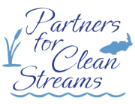 February 2 is World Wetlands Day. Did you know Northwest Ohio was once home to 1,500 square miles of wetlands? Wetlands improve water quality, control erosion, store floodwater, plus they’re biodiversity hotspots. Learn more about wetlands’ past, present, and future in our region.
February 2 is World Wetlands Day. Did you know Northwest Ohio was once home to 1,500 square miles of wetlands? Wetlands improve water quality, control erosion, store floodwater, plus they’re biodiversity hotspots. Learn more about wetlands’ past, present, and future in our region.
Across Ohio, only 10% of our once-abundant wetland habitat remains. In pre-industrial times, Northwest Ohio was home to the Great Black Swamp, a vast stretch of wetlands and woodlands that housed a wide variety of plants and animals. As more European settlers arrived in the region, they began to drain the swamp to make the land more suitable for agriculture. While this resulted in some of the most productive farmland in the country, it came at the expense of our region’s wetlands.
However, wetland habitat still remains in our area, both original and restored. You can find wetlands coastal areas along Lake Erie, including birding hotspots like Magee Marsh Wildlife Area and Maumee Bay State Park, as well as farther inland in the wet prairies of Oak Openings. Wetland restoration projects like the Penn 7 Maumee River Habitat and the Sandhill Crane Wetlands at Kitty Todd Preserve paint a hopeful picture for the future of wetlands in Northwest Ohio.
This World Wetlands Day, what are we celebrating? A lot! Wetlands act as storage facilities for water during and after large rain events, helping to prevent flood damage and erosion. They are capable of absorbing and holding substantial amounts of water, and then slowly release it over time. Wetlands also act as natural filters for the water that enters their systems. As water is retained in the wetland, suspended sediments are able to drop out and nutrients, such as those coming from fertilizer, are consumed by plants and microorganisms. Eventually, the water is released into the ground below or into a nearby waterway, with better water quality than when it entered the wetland. Wetlands are also extremely productive biologically, acting as homes for many different plants, as well as insects, frogs, turtles, fish, mammals, and as important stopovers for migratory birds.
